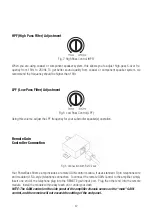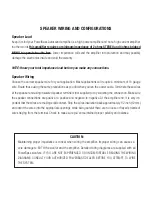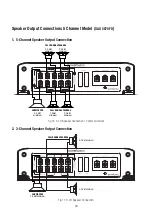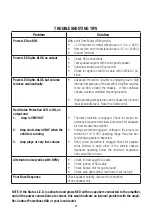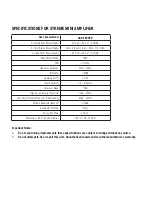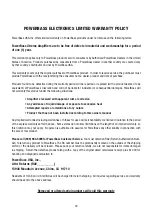
Secure the ground cable to the body using a bolt, star washer and nut. Spread silicon over the screw and
bare metal to prevent rust and possible water leaks.
NOTE: The Ground must be capable of carrying the same amount of current as the positive wire.
Now it’s time to connect the power and ground cables to the amplifier.
Cut both cables to length.
Strip off 1/2 inch (12mm) of the insulation so that the bare wire fits all the way in the terminal block on
the side panel of the amplifier, seating it firmly so no bare wire is exposed. Use a screw driver to losen the
BATT+ and the GND connection on the amplifier. Insert the ground first, and then the +12V and please make
sure that you place them into the correctly marked terminals. Then tighten the screws down securely - use
care not to over tighten and damage the wire.
REMOTE (Remote Trigger)
This terminal must be connected to a sw12V source. Typically, remote turn-on leads are provided
at the source unit that will turn on and off the amplifier in correspondence with the source. If the source unit
does not have a remote turn-on lead, then a power antenna wire can be used. If neither of these leads is
available at the source unit, then a sw12V supply must be used, like the ACC, +12V.
Run a minimum of 18 gauge wire from the amplifier location to the source of the sw12V lead. If
possible, route this wire on the same side of the vehicle as your power cable. Connect the source remote
output to the wire. Go back to the amplifier and cut the wire to length. Loosen the screw terminal marked
REMOTE on the amplifier using a Philips (cross) type screwdriver. Insert the stripped (bare) portion of the
wire into the terminal and tighten the screw securely.
NOTE:
It is highly recommended that a hand screw driver and NOT a power drill is used to
tighten the set screws on the terminal blocks. This will prevent stripping or other possible
damage to the amplifier.

















